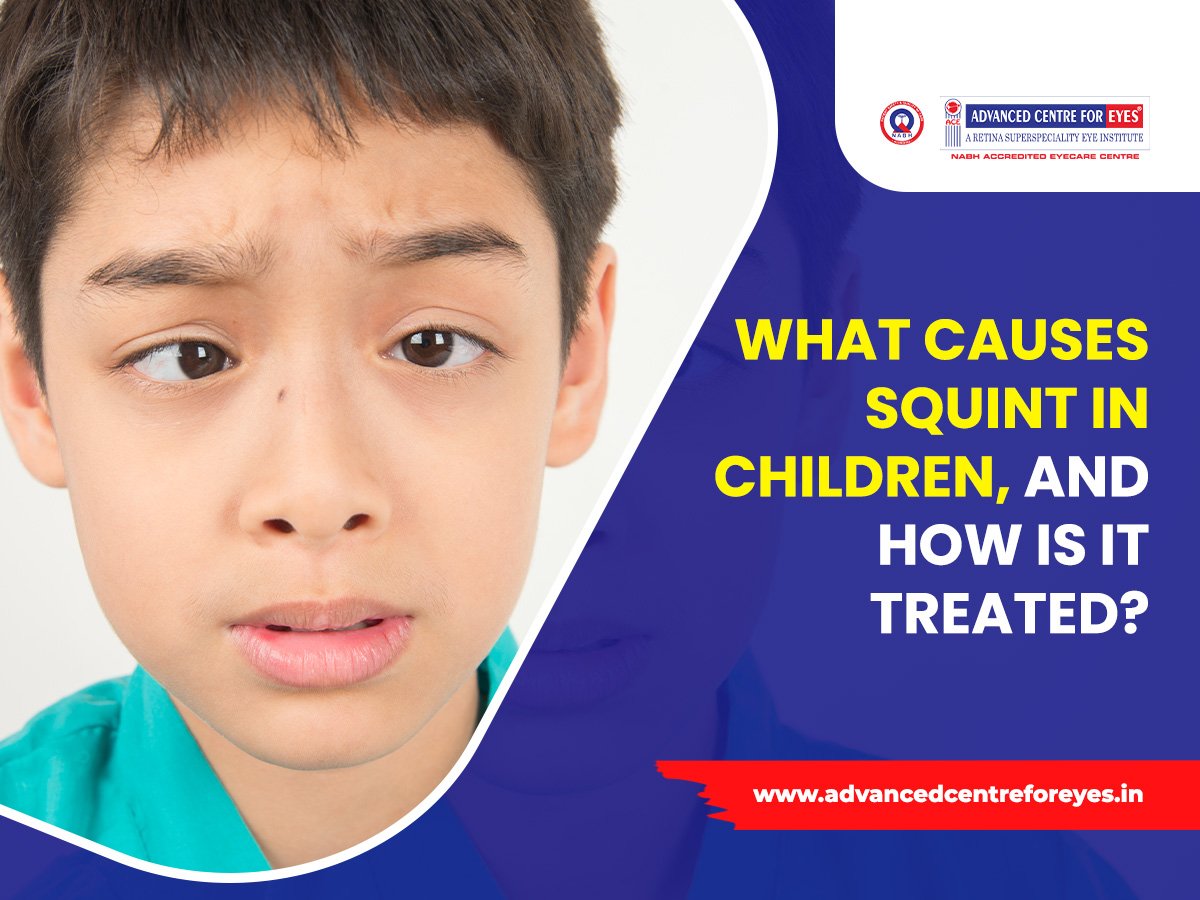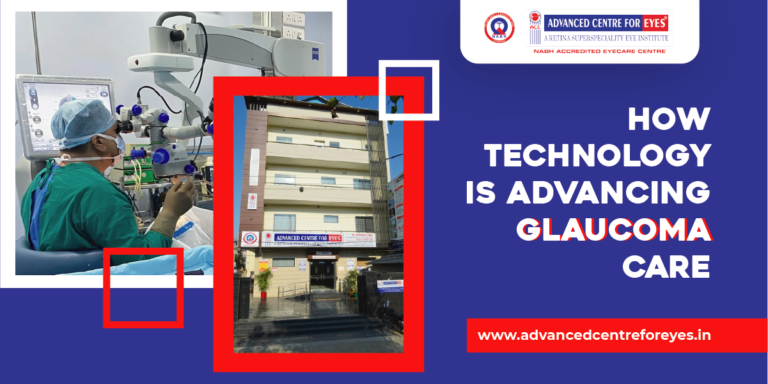What Causes Squint In Children, And How Is It Treated?
What Causes Squint In Children, And How Is It Treated?
Have you ever seen someone whose eyes don’t look in the same direction? This condition is called a squint or strabismus. In children, squinting is quite common, and it happens when the eyes don’t work together as a team. Instead of both eyes focusing on the same point, one eye might look straight ahead while the other eye may turn inward, outward, upward, or downward. This can make things appear blurry or doubled.
Squinting can happen to anyone, but it is most commonly seen in children. It’s essential to understand the causes of squint and how it can be treated, so children can grow up with healthy vision. Let’s explore what causes squint in children and how it can be treated by visiting the best eye hospital in Ludhiana.
Why do children develop squints?
There are several reasons why a child might develop a squint. These causes may vary from child to child, and sometimes, there is no clear reason why a squint happens. Here are some common causes:
- Weak eye muscles: The muscles around the eyes help them move in the right direction. If these muscles are weak or not coordinated properly, it can cause one eye to drift. When these muscles don’t work well together, a squint can develop.
- Refractive errors: Some children have difficulty seeing clearly because they need glasses to correct problems like nearsightedness or farsightedness. When one eye sees more clearly than the other, the brain might ignore the eye with poorer vision. This causes the eye to wander, resulting in a squint. In many cases, getting the right glasses from the best eye hospital in Ludhiana can correct this issue.
- Eye or vision problems at birth: Some children are born with squints. This could be due to issues with the development of their eyes during pregnancy or hereditary factors. If one or both parents had a squint when they were young, their child might also develop a squint.
- Injury or trauma: If a child experiences an injury to the head or eyes, it can sometimes lead to squinting. This happens because the nerves or muscles controlling the eyes may become damaged.
- Neurological conditions: Some squints are caused by problems in the brain that affect how the eyes move. Conditions like cerebral palsy or Down syndrome can sometimes lead to squints in children.
- Premature birth: Babies born prematurely are at a higher risk of developing squints. This is because their eyes and visual systems might not have fully developed before birth.
Types of Squint
Did you know that there are different types of squints? The type of squint a child has depends on which direction the affected eye turns. Let’s look at the main types:
- Esotropia: This is when one eye turns inward towards the nose. It’s the most common type of squint in children.
- Exotropia: In this type, one eye turns outward, away from the nose. It often happens when a child is daydreaming or tired.
- Hypertropia: This is when one eye turns upward, pointing higher than the other.
- Hypotropia: In this case, one eye points downward, lower than the other eye.
All these types of squints need medical attention. That’s why visiting the best squint eye specialist in Ludhiana is so important. There, specialists can determine the type of squint and recommend the right treatment.
How can a squint affect a child’s vision?
A squint can cause more than just cosmetic concerns. It can also affect a child’s vision in several ways:
- Double vision: When the eyes are not aligned, a child may see two images instead of one. This can make it difficult to read, play, or do everyday activities.
- Lazy eye (amblyopia): If a squint is left untreated, the brain may start ignoring the image from the weaker eye. This can lead to a condition called amblyopia or lazy eye, where one eye becomes much weaker than the other.
- Poor depth perception: Depth perception is the ability to judge how far away things are. With a squint, a child might have trouble seeing how near or far an object is, which can make activities like catching a ball or climbing stairs difficult.
How is squint in children treated?
The good news is that squints can be treated, and with early intervention, many children can continue to have normal vision. Let’s look at some common treatments:
- Eyeglasses: If the squint is caused by a refractive error, like nearsightedness or farsightedness, wearing glasses can often correct the problem. Glasses help focus the eyes properly and may help the squint improve over time. At the best eye hospital in Ludhiana, doctors will carefully examine the child’s vision and prescribe the right glasses.
- Patching: If one eye is weaker than the other, doctors may recommend covering the stronger eye with a patch. This forces the weaker eye to work harder, helping to strengthen it over time. Patching is often used for children who have developed a lazy eye along with their squint.
- Eye exercises: Some children benefit from doing special eye exercises. These exercises help improve coordination between the eyes and strengthen the eye muscles. Eye specialists at the best eye hospital in Ludhiana can teach parents and children how to do these exercises at home.
- Surgery: In some cases, surgery may be necessary. Eye muscle surgery is performed to adjust the muscles around the eye, making them stronger or weaker, depending on what’s needed. This helps the eyes line up correctly. Surgery is usually recommended when other treatments, like glasses or patching, don’t work. It’s a safe and effective option offered at the best eye hospital in Ludhiana, where expert surgeons perform these procedures.
- Botox injections: While it might sound surprising, Botox injections can sometimes be used to treat squints. Botox is injected into the muscles around the eye, temporarily weakening them. This can help improve eye alignment. This treatment is less common but can be helpful in certain cases.
- Prisms: Sometimes, glasses with special lenses called prisms are used to correct squints. Prisms help the eyes work together by bending light before it enters the eye, reducing double vision.
What to expect during treatment
Treating a squint can take time, and children may need regular check-ups at the eye hospital to see how their treatment is progressing. For some children, wearing glasses or doing eye exercises might be enough, while others may need surgery or other treatments. It’s important for parents to follow the eye doctor’s instructions carefully and encourage their children to wear their glasses or patches as directed.
At the best squint treatment hospital in Ludhiana, the doctors and specialists work closely with parents to make sure the child gets the best care. They provide clear instructions and support every step of the way.
How can parents help their child during treatment?
Parents play an essential role in helping their child through squint treatment. Here are some ways they can support their child:
- Encourage the child to wear glasses: Some children might not like wearing glasses at first. It’s important for parents to explain how glasses can help them see better and reduce their squint. Rewarding children for wearing their glasses can be a fun and effective way to encourage them.
- Make patching fun: If the child needs to wear a patch over one eye, parents can make it a positive experience by decorating the patch or creating games that involve the patch. This can make patching feel less like a chore and more like an adventure.
- Practice eye exercises together: Parents can help by doing the eye exercises with their child, making it a daily routine. This way, the child feels supported and motivated to do their exercises.
- Attend regular check-ups: Regular visits to the best eye hospital in Ludhiana are crucial for monitoring the child’s progress. Parents should ensure they attend all appointments and follow the doctor’s recommendations.
Conclusion
Squints in children are a common condition that can affect their vision if left untreated. However, with the right treatment and support, children with squints can enjoy healthy vision as they grow. Whether it’s wearing glasses, doing eye exercises, or undergoing surgery, there are many ways to treat squints effectively.
If your child has a squint, it’s important to seek help from the best eye hospital in Ludhiana. The doctors and specialists there can provide expert care and ensure your child gets the treatment they need. With early diagnosis and the right approach, children with squints can overcome their vision problems and see the world clearly.








